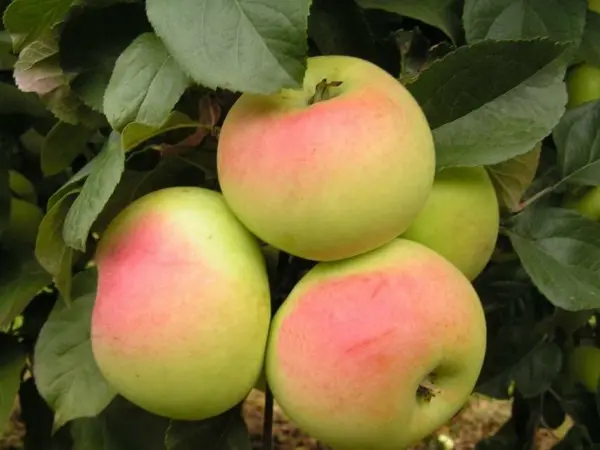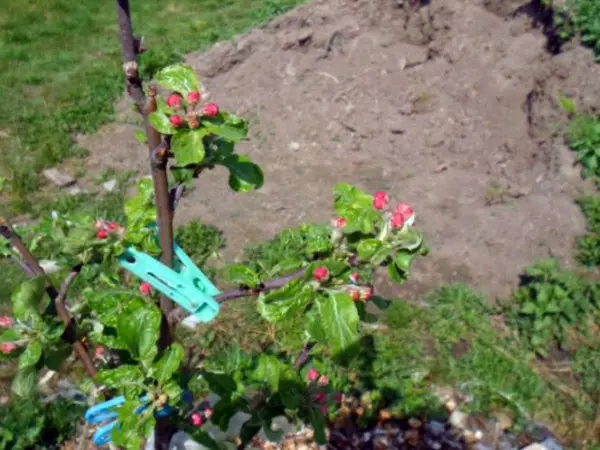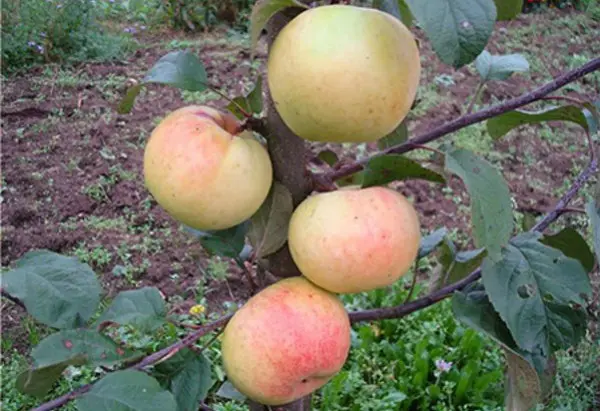Contents
Apples have always been widespread in Europe and Asia. Even despite the abundance of exotic overseas fruits presented today in supermarkets and markets, they are still in great demand and popular love. However, in order to grow good apples in cold and temperate climates, one has to look for adapted cold-resistant varieties. The Imrus apple tree is a wonderful winter variety intended for growing in gardens and industrial cultivation, the description and characteristics of which will be presented in the article.
Basic information about the variety
Imrus is a variety of winter apples, bred in the process of crossing the well-known Antonovka variety with frost-resistant winter hybrids. Breeding work on the cultivation of Imrus apples began in 1977 at the Research Institute of Fruit Crops Breeding, where for almost 10 years the variety was tested on the main indicators: winter hardiness, immunity to diseases, yield.
Since all the indicators were on top, in 1989 the Imrus variety was accepted for state testing, as a result of which, after 7 years (in 1996), it was included in the State Register of varieties intended for industrial cultivation.

The hybridization process was complex and lengthy. Dozens of winter-hardy species of apple trees over 10 years old were selected for crossing, of which seven experimental specimens were isolated. By repeated pollination of varieties with each other, the seeds of this hybrid were obtained. Further, after stratification, the seed material was planted in the soil, where the “mentor method” (developed by I.V. Michurin) developed the Imrus hybrid.
To give apple trees frost resistance, their experimental cultivation took place in a cold climate, so the variety has a high immunity to cold and can grow even in extremely harsh weather conditions. Also, the hybrid is resistant to many diseases, especially powdery mildew and scab. Today, the Imrus variety is zoned in the Central Black Earth and Central regions of Our Country, as well as in several regions of Belarus.
Characteristic of the variety
Adult Imrus apple trees are medium in size and have a round, compact, medium-density crown. The main branches depart from the trunk at an acute angle, and rush upward. The skeletal branches are considerably distant from each other and are strongly curved at the ends. The bark on the trunk and branches is rough, flaky. The color of the bark is gray-brown, slightly greenish. This description is typical for mature trees aged 3–4 years.

Apple trees bloom in early May with corymbose inflorescences, consisting of 4–6 small flat flowers on short stalks. The petals are white with a pinkish tint around the edges, the buds are more pink in color. Fruits of medium size, at full maturity reach a weight of 130–180 g. The shape of the fruit is flattened, slightly conical.
The external description of the fruit is as follows: the peel is thin, with a glossy oily surface, slightly ribbed, light yellow in color, with a slight blush on one side. The taste of apples is quite sweet, since the sugar content in them reaches 10%. Ripe fruits contain a lot of vitamin C, dietary fiber and pectins.
Apples are great for fresh consumption, as well as for processing.
The first time the variety begins to bear fruit in the third year of life, but the amount of the crop is estimated at a dozen fruits. In the fourth year, the yield increases significantly, and is already more than 10 kilograms. By the eighth year of life, the average yield of a tree is more than 20 kg.

Rules of landing and care
Variety Imrus refers to unpretentious apple trees. Young seedlings adapt without problems and successfully take root in any climate. The crop has certain requirements for planting dates – the autumn period from the second half of September to mid-October is considered the most favorable.
When landing, the following conditions must be observed:
- The place for planting apple trees should be open, not shaded by structures or mature trees.
- The site should be illuminated by the sun for at least half a day.
- Seedlings must be planted at a sufficient distance from each other or other types of fruit crops. For young Imrus apple trees, it is desirable that there are no trees within a radius of 2–3 m.
- The optimal depth of the pit is 80–90 cm.
- To speed up the rooting process, it is necessary to lay a layer of organic fertilizer (compost, humus) at the bottom of the planting pit.

For rapid and proper development, young trees need comprehensive care, consisting of the following activities:
- regular inspection of seedlings for damage and disease;
- removal of damaged or dried branches, followed by healing of the circumcision site;
- loosening the soil and removing weeds around tree trunks;
- correct and timely watering (in the first year of life of seedlings, the soil should not be allowed to dry out; in subsequent years, watering is carried out only in conditions of abnormal heat and drought);
- treatment for pests and some diseases;
- mulching (shelter) of near-stem circles for the winter if the tree grows in too harsh a climate.
Subject to these simple rules, Imrus apple trees will grow healthy and quickly delight you with a bountiful harvest.

Harvesting and storage
Imrus is a winter, but early-growing variety. Removable maturity apples reach the end of September. At this time, they are removed, after which the fruits ripen for a short time (about a month) in a cool place. Of course, they can be consumed immediately, but after ripening they will become sweeter, juicier, fragrant, and the peel will acquire a yellowish tint.
The period of consumer use of apples lasts from November to the end of winter. For their long-term storage, it is necessary to allocate a darkened cool place (basement, cellar). Best of all, the fruits are stored in wooden boxes.
Since the peel is very thin, it is recommended to lay straw and parchment between the layers of apples – this way they will last longer.
As the description says, Imrus is considered a high-yielding variety – under favorable conditions, 25-30 kg of fragrant and tasty fruits can be harvested from one adult tree.
Video “How to save winter apples”
This video is about how to shoot and store winter apples at home.









